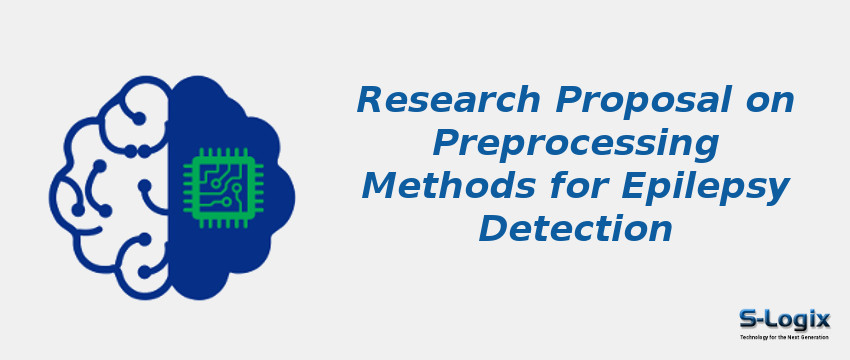In epilepsy detection, Electroencephalogram (EEG) plays a major role in recognizing epileptic seizure patterns. EEG signal processing initially requires preprocessing due to its raw form. Preprocessing EEG signals is the essential process that transforms the raw EEG signals into a suitable form to analyze and interpret the EEG signals for epilepsy seizure detection. The raw EEG signals contain undesirable noise and artifacts, affecting feature extraction, selection, and classification.
EEG preprocessing is exploited in various EEG-based medical applications via machine learning and deep learning concepts. It removes unwanted artifacts and selecting features, which is beneficial to making the EEG signal acceptable for further processing. Thereby, EEG signal preprocessing is a significant process in epileptic seizure detection.
Notable Preprocessing Methods for Epilepsy Detection:
• Preprocessing of EEG signals removes the artifacts to ensure and extract the appropriate information from the raw EEG signals.
• Popular EEG preprocessing concepts include down-sampling, artifact handling, channel selection, and feature scaling.
• Some artifact removing and noise filtering-based preprocessing techniques utilized for epilepsy detection are EEG artifact rejection, regression methods, wavelet transform, blind source separation, source decomposition methods, and hybrid methods.
• Feature extraction and selection methods are the important processes utilized to prefer and extract the useful feature characteristics of EEG signals to reduce the complexity and improve the analysis of EEG signals for epilepsy detection.
• Techniques for feature extraction and selection include time domain, frequency domain, time-frequency, and non-linear analysis.
• These techniques extract pertinent feature components of EEG signals to better interpret epileptic EEG signals in epilepsy detection.
• Some of the EEG preprocessing methods for epilepsy detection are highlighted below:
Time-domain:
• EEG recordings in the time domain of epileptic and non-epileptic forms contain ictal and interictal states.
• An unsupervised approach called component analysis is employed to extract time-domain features, including principal component analysis, independent component analysis, and linear discriminant analysis.
Frequency Domain:
• The frequency domain is used to analyze spectral estimation of EEG signals via parametric and non-parametric approaches.
• Power spectral density is calculated using the non-parametric approach, whereas the parametric approach help to characterize the EEG signals using the moving average model, the auto-regressive model, and the auto-regressive moving average model.
Time-frequency:
• Time-frequency domain imparts both time and frequency mechanisms of EEG signals, subsequently.
• Wavelet transform-based time-frequency domain includes continuous wavelet transform, discrete wavelet transforms, stationary wavelet transforms, and empirical wavelet transform.
• Other wavelet decomposition methods are wavelet packet decomposition, multi-level wavelet decomposition, empirical mode decomposition, and fast wavelet decomposition.
Non-linear analysis:
• To analyze the intricacy and fractal nature of EEG signals, non-linear analysis is utilized.
• The non-linear analysis involves several parameters to characterize EEG signals, such as entropies, recurrence quantification analysis, higher-order spectra and cumulants, and many more.
Emerging Research Directions of EEG Signal Analysis in Epilepsy Detection:
• Several research studies preprocess the EEG signals focusing on artifact handling methods, feature extraction methods, and statistical features.
• The future scope of EEG signal preprocessing need more concentration to work upon the functional connectivity and complexity characteristics of EEG signal.
• Graph theory analysis helps to understand the connectivity and complexity of EEG signals, ultimately detecting epileptic seizures.
• With the help of specific graph parameters, innovative insights into epileptic seizure activity are revealed for epilepsy identification.
• Graph theory comprehends and imparts fundamental dynamics of EEG signals at the microscopic, mesoscopic, and macroscopic levels.
• The topological and statistical properties of the EEG signal network are extracted by graph theory to analyze the seizure patterns, as the graph network is similar to brain networks.
• Graph theory-based preprocessing of EEG signals contributes essential knowledge about the structural and functional affliction of the brain with epilepsy.
